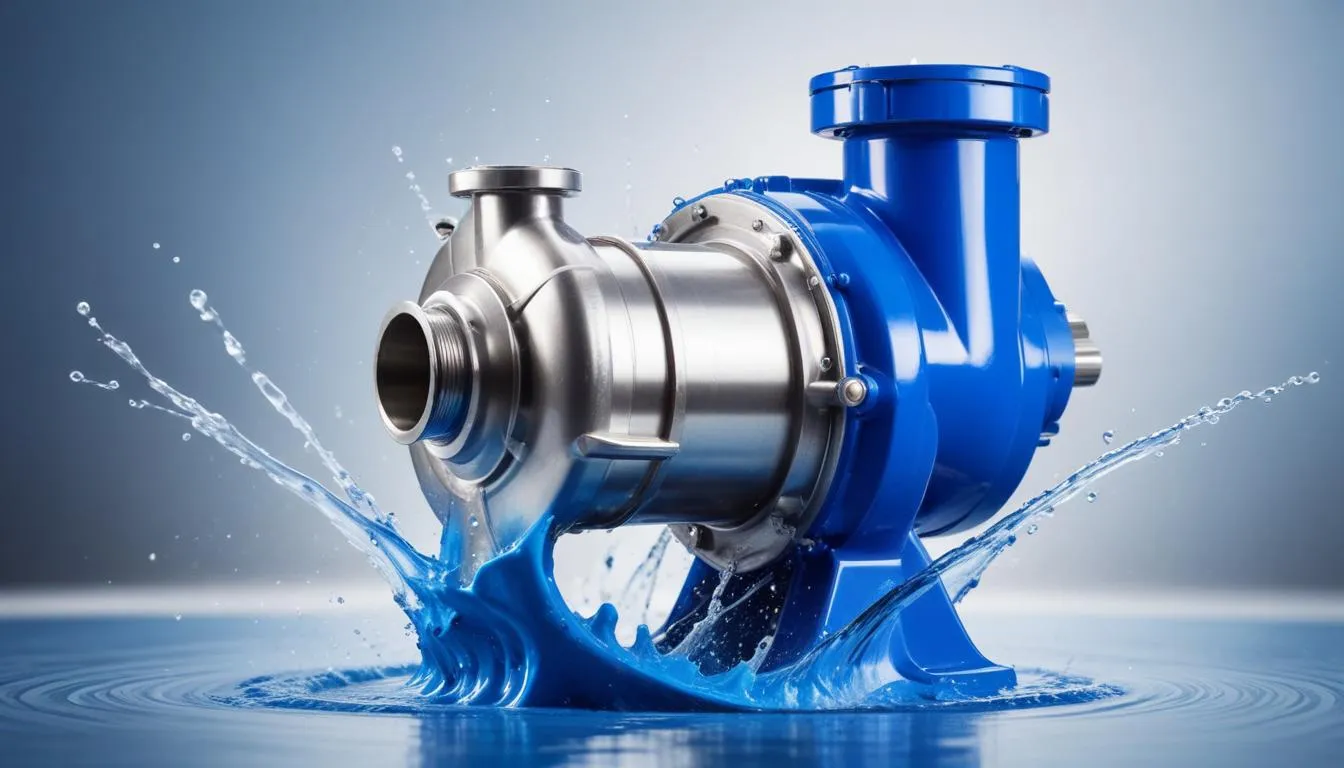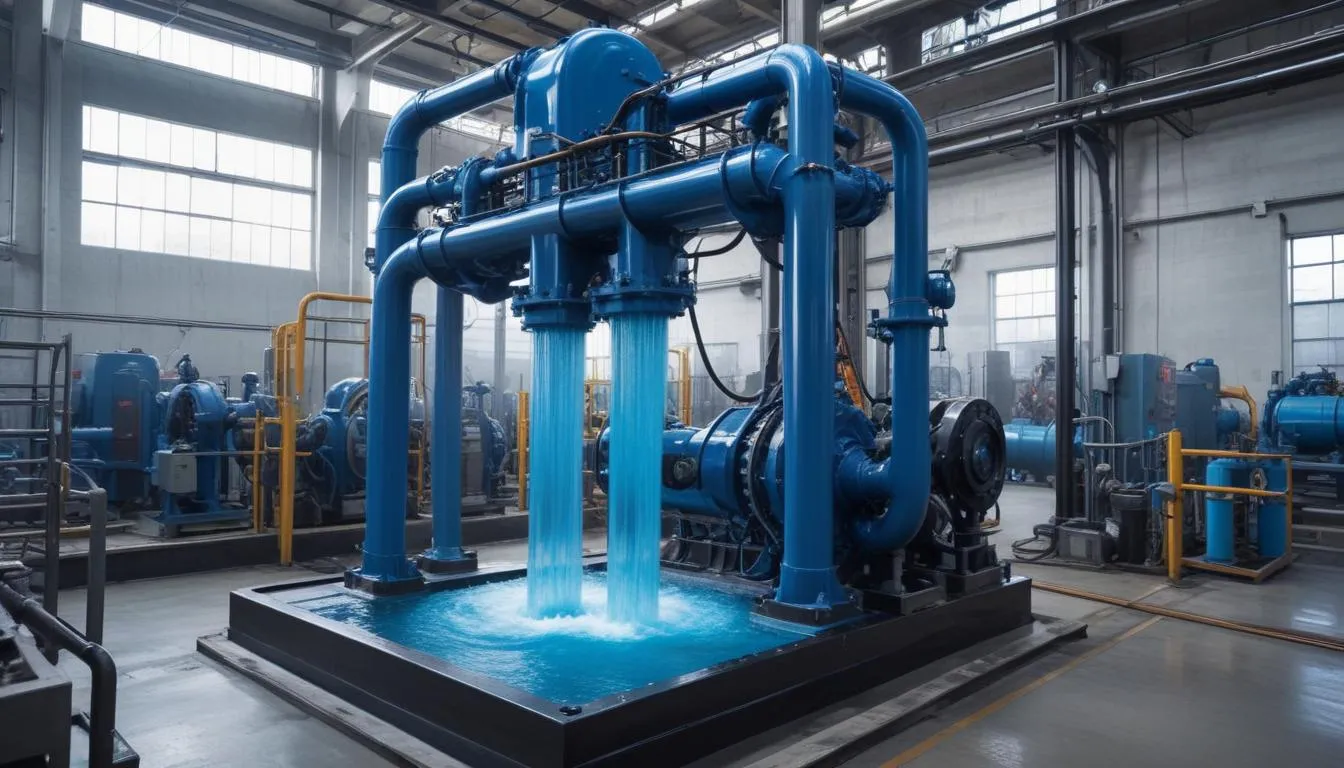 Dynamic pumps are a type of fluid transportation device that utilizes kinetic energy to move liquids or gases through a system. At the core of a dynamic pump’s operation is the principle of converting rotational energy into hydrodynamic energy. This is achieved mainly through an impeller, a rotating component with blades that increases the velocity of the fluid as it passes through the pump.
Dynamic pumps are a type of fluid transportation device that utilizes kinetic energy to move liquids or gases through a system. At the core of a dynamic pump’s operation is the principle of converting rotational energy into hydrodynamic energy. This is achieved mainly through an impeller, a rotating component with blades that increases the velocity of the fluid as it passes through the pump.
When fluid enters the pump, it is drawn into the impeller’s eye, where it starts to gain velocity due to the motion imparted by the rotating blades. As the fluid accelerates, it moves outward and enters the volute or diffuser section of the pump. This section is designed to convert the high-velocity kinetic energy of the fluid into pressure energy. The shape of the volute allows for smooth deceleration of the fluid, thereby increasing its pressure and facilitating flow through the discharge outlet.
The performance of dynamic pumps can be characterized by several parameters, including:
- Flow rate: The volume of fluid that the pump can move per unit time, typically measured in gallons per minute (GPM) or liters per second (L/s).
- Head: The height through which the pump can raise the fluid, measured in feet or meters.
- Efficiency: A measure of how effectively the pump converts input energy into hydraulic energy.
Dynamic pumps are categorized broadly into centrifugal and axial types:
- Centrifugal pumps: These pumps use a rotating impeller to increase the velocity of the fluid and typically have a volute casing. They are widely used in applications involving high flow rates and lower pressure heads.
- Axial pumps: These utilize blades similar to a propeller to push the fluid in the axial direction. They are best suited for high flow, low head applications, such as in flood control and cooling systems.
In summary, the operational framework of dynamic pumps relies on the efficient interaction between the rotating impeller and the fluid being transported, all while converting kinetic energy into useful hydraulic energy for various applications.
Advantages and Disadvantages
Dynamic pumps offer a variety of advantages and disadvantages that can significantly influence their selection for different applications. Understanding these factors is crucial for engineers and designers when evaluating the suitability of dynamic pumps for specific systems.
One of the major advantages of dynamic pumps is their high efficiency in converting energy into hydraulic power. This efficiency can lead to lower energy consumption, which is especially beneficial for large-scale operations or continuous service applications. The streamlined design of dynamic pumps, particularly centrifugal types, allows for high flow rates with relatively low operational costs.
Maintenance and operational simplicity represent another significant benefit. Dynamic pumps typically have fewer moving parts compared to positive displacement pumps, which simplifies maintenance processes and reduces overall downtime. The straightforward design often allows for easier troubleshooting and repairs, leading to increased operational reliability.
Moreover, dynamic pumps are highly adaptable and can effectively handle varying fluid properties, including corrosive or contaminated substances. This versatility means they can be employed in diverse industries, from water treatment to chemical processing, without requiring extensive modifications.
Dynamic pumps also have the advantage of being capable of self-priming in many designs, especially in centrifugal configurations. This characteristic is essential for applications where the pump may need to start dry or where the fluid level fluctuates.
However, dynamic pumps are not without their downsides. One significant disadvantage is their performance sensitivity to changes in the fluid’s viscosity. As temperature or pressure changes occur, or when handling thicker fluids, the efficiency and flow characteristics of the pump can diminish, potentially leading to cavitation—a phenomenon that can damage the pump.
Another limitation is the lubrication and cooling requirements of dynamic pumps. These pumps often require a continuous supply of fluid to properly lubricate and cool the internals, which complicates systems where the fluid may not always be readily available. In scenarios where continuous operation is crucial, any interruption can lead to overheating and premature wear.
Limitations in suction lift capability can also be a concern with dynamic pumps. Unlike positive displacement pumps, which can effectively handle high suction lifts, dynamic pumps are generally more limited in this regard. They are best suited for applications with lower suction lift requirements, as excessive lift can lead to performance issues.
When evaluating the advantages and disadvantages of dynamic pumps, key factors emerge:
- Advantages:
- High efficiency and low energy consumption
- Simple maintenance due to fewer moving parts
- Versatility for handling various fluid types
- Self-priming capabilities in many designs
- Disadvantages:
- Performance sensitivity to viscosity changes
- Lubrication and cooling requirements can complicate operation
- Limited suction lift capability compared to positive displacement pumps
In conclusion, the decision to use a dynamic pump will largely depend on the specific requirements of the application, including pump performance, maintenance considerations, and the properties of the fluid being pumped. While they excel in several areas, their limitations must also be carefully considered to ensure optimal system performance.
Applications of Dynamic Pumps
 Dynamic pumps are widely utilized across various industries due to their efficiency and adaptability. Their applications are diverse and critical for numerous processes, including:
Dynamic pumps are widely utilized across various industries due to their efficiency and adaptability. Their applications are diverse and critical for numerous processes, including:
- Water Supply and Management: Dynamic pumps are fundamental in municipal water systems, where they are employed to transport and distribute potable water. They are often used in well pumps, booster stations, and wastewater treatment facilities to manage flow rates and maintain adequate pressure throughout the system.
- Industrial Processes: In manufacturing and chemical industries, dynamic pumps are used to move liquids such as solvents, acids, and other chemicals. Their high flow rates and ability to handle corrosive and viscous fluids make them ideal for processes like mixing, cooling, and heating.
- Agricultural Applications: Dynamic pumps serve a key role in irrigation systems, transferring water from rivers, lakes, or reservoirs to agricultural fields. They help in efficient water distribution for crop irrigation, thus enhancing productivity and sustainability in farming.
- Fire Protection Systems: These pumps are critical in fire suppression systems, where they provide high-pressure water flow to hydrants and sprinkler systems, ensuring quick and efficient responses to fire emergencies.
- Heating and Cooling Systems: In HVAC applications, dynamic pumps circulate water or other fluids through heating and cooling systems. They are vital for maintaining temperature control in residential, commercial, and industrial settings.
- Marine Applications: Dynamic pumps are frequently found in maritime operations, including bilge pumps and cooling systems for ship engines. Their reliable performance in moving large volumes of water contributes to ensuring the safety and efficiency of maritime activities.
- Mining Operations: In the mining industry, dynamic pumps are used for dewatering applications to remove water from mines and maintain safe working conditions. They also facilitate the transportation of slurry materials.
Each of these applications highlights the importance of dynamic pumps in maintaining fluid movement across various sectors. Their ability to handle different fluid properties and deliver effective performance under various conditions makes them indispensable tools in modern infrastructure and industry. Additionally, the ongoing advancements in dynamic pump technology continually expand their applications, allowing for better efficiency and adaptability to evolving market needs.